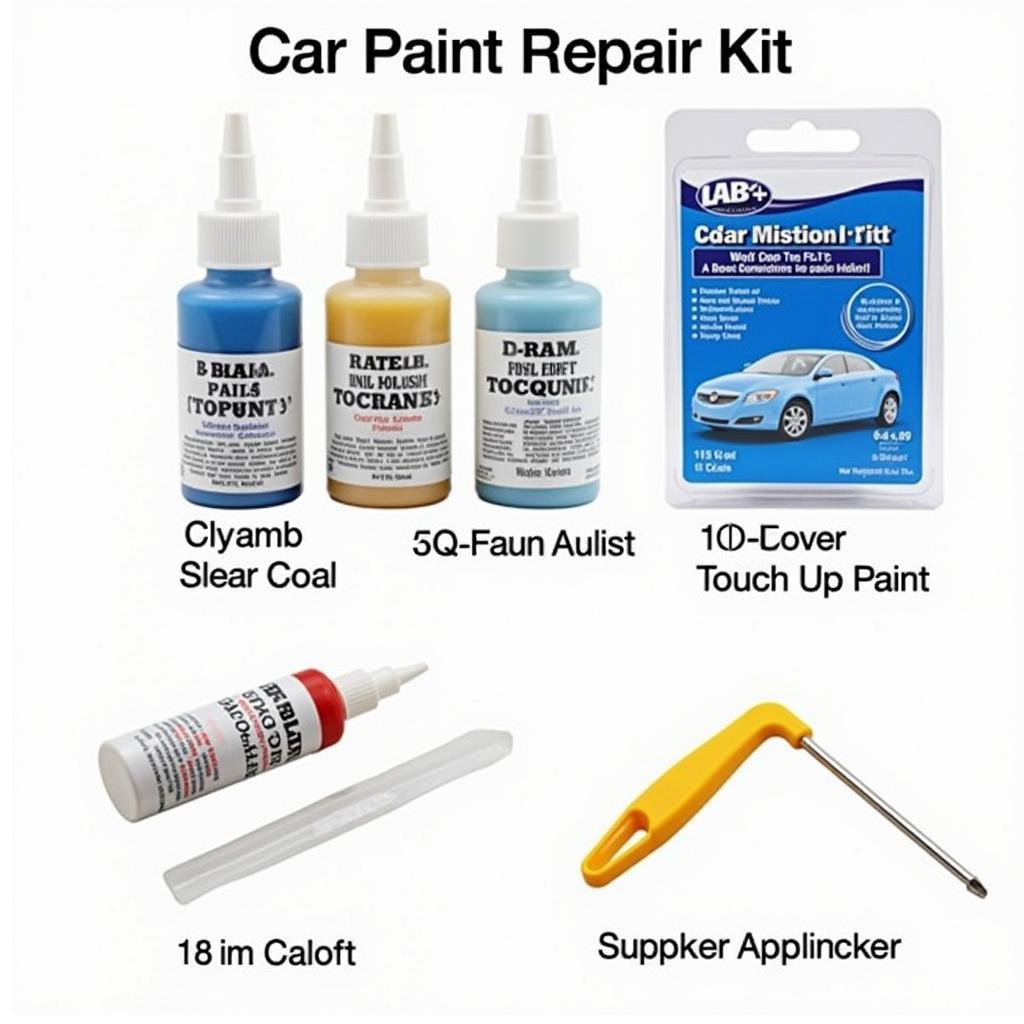Paint for cars is more than just a cosmetic enhancement; it’s a protective layer against the elements and a key factor in maintaining your vehicle’s value. Whether you’re a seasoned car enthusiast or a first-time buyer, understanding the nuances of automotive paint can save you time, money, and frustration. This guide will delve into everything you need to know about car paint, from types and application techniques to maintenance and repair.
Types of Car Paint
Choosing the right paint is crucial for achieving a professional and long-lasting finish. There are several types of car paint available, each with its own advantages and disadvantages. Let’s explore some of the most common options:
- Acrylic Lacquer: A classic choice known for its ease of application and brilliant shine. However, it’s less durable than other options and requires more frequent polishing.
- Acrylic Enamel: This type offers a good balance between durability and affordability. It’s more resistant to chipping and fading than lacquer but requires a longer drying time.
- Urethane: Known for its exceptional durability and resistance to chemicals and UV rays. Urethane paints are often the choice for professional auto body shops, but they can be more challenging to apply.
- Water-Based: An environmentally friendly option that’s gaining popularity. Water-based paints release fewer volatile organic compounds (VOCs) and offer comparable durability to traditional solvent-based paints.
Understanding these different paint types will help you make an informed decision based on your specific needs and budget.
You can also find suitable spray paint options for quicker touch-ups. Check out our guide on spray paint for cars.
Applying Car Paint Like a Pro
Achieving a flawless paint job requires more than just the right paint; it also demands the proper tools and techniques. Here’s a step-by-step guide to help you achieve professional results:
- Preparation: Thoroughly clean and sand the car’s surface to remove any rust, imperfections, or old paint. This step is crucial for ensuring proper adhesion.
- Priming: Apply a primer to create a smooth and uniform base for the paint. This also helps to prevent rust and improve color consistency.
- Painting: Apply several thin coats of paint using a paint gun for cars, allowing each coat to dry before applying the next. This will prevent runs and ensure an even finish.
- Clear Coat: Apply a clear coat to protect the paint and enhance its shine. This layer also adds UV protection to prevent fading.
- Polishing and Buffing: Once the clear coat has cured, polish and buff the surface to achieve a smooth, glossy finish.
 Car Painting Process Step by Step
Car Painting Process Step by Step
Maintaining Your Car’s Paint
Protecting your car’s paint is an ongoing process. Regular washing and waxing can help prevent fading, chipping, and other damage. Avoid parking in direct sunlight for extended periods, and consider using a car cover to protect your vehicle from the elements.
If you’re looking to remove old paint, check out our guide on paint stripper for cars.
Repairing Minor Paint Damage
Minor scratches and chips can be repaired with touch-up paint and a clear coat. For more significant damage, it’s best to consult a professional auto body shop.
 Car Paint Repair Kit for Minor Scratches and Chips
Car Paint Repair Kit for Minor Scratches and Chips
What is the best paint for cars?
The best paint for cars depends on several factors, including your budget, desired level of durability, and the environment your car is exposed to. Urethane paints offer excellent durability, while water-based paints are a more environmentally friendly option.
How often should I wax my car?
Waxing your car every 3-4 months is generally recommended to protect the paint and maintain its shine. However, this can vary depending on the type of wax used and the environment your car is exposed to.
“Regular maintenance is key to preserving your car’s paint job,” says automotive expert, John Miller, “and a good wax is your first line of defense against the elements.”
Can I paint my car myself?
While painting your car yourself is possible, it requires patience, skill, and the right equipment. If you’re not comfortable with the process, it’s best to leave it to a professional.
“DIY painting can be rewarding,” adds Sarah Johnson, a seasoned auto body technician, “but it’s crucial to understand the process and invest in quality materials. Rushing the job will only lead to disappointing results.”
Conclusion
Choosing the right paint for cars and maintaining that paint job is crucial for preserving your vehicle’s appearance and value. By understanding the different types of paint, application techniques, and maintenance practices, you can keep your car looking its best for years to come. Consider exploring our guides on used car online and low rider cars for more automotive insights.
FAQ
- What is the most durable type of car paint? Urethane paints are generally considered the most durable.
- How can I remove scratches from my car’s paint? Minor scratches can be removed with polishing compound or touch-up paint.
- How often should I wash my car? Washing your car every 1-2 weeks is generally recommended.
- What is the purpose of a clear coat? A clear coat protects the paint from UV rays, chipping, and fading.
- How can I prevent my car’s paint from fading? Regular waxing and avoiding prolonged sun exposure can help prevent fading.
- Can I use household cleaners on my car’s paint? It’s best to use car wash soap specifically designed for automotive paint.
- What is the difference between lacquer and enamel paint? Lacquer dries faster and is easier to apply, but enamel is more durable.
For further assistance, please contact us via WhatsApp: +1(641)206-8880, Email: [email protected] or visit us at 276 Reock St, City of Orange, NJ 07050, United States. Our customer service team is available 24/7.


